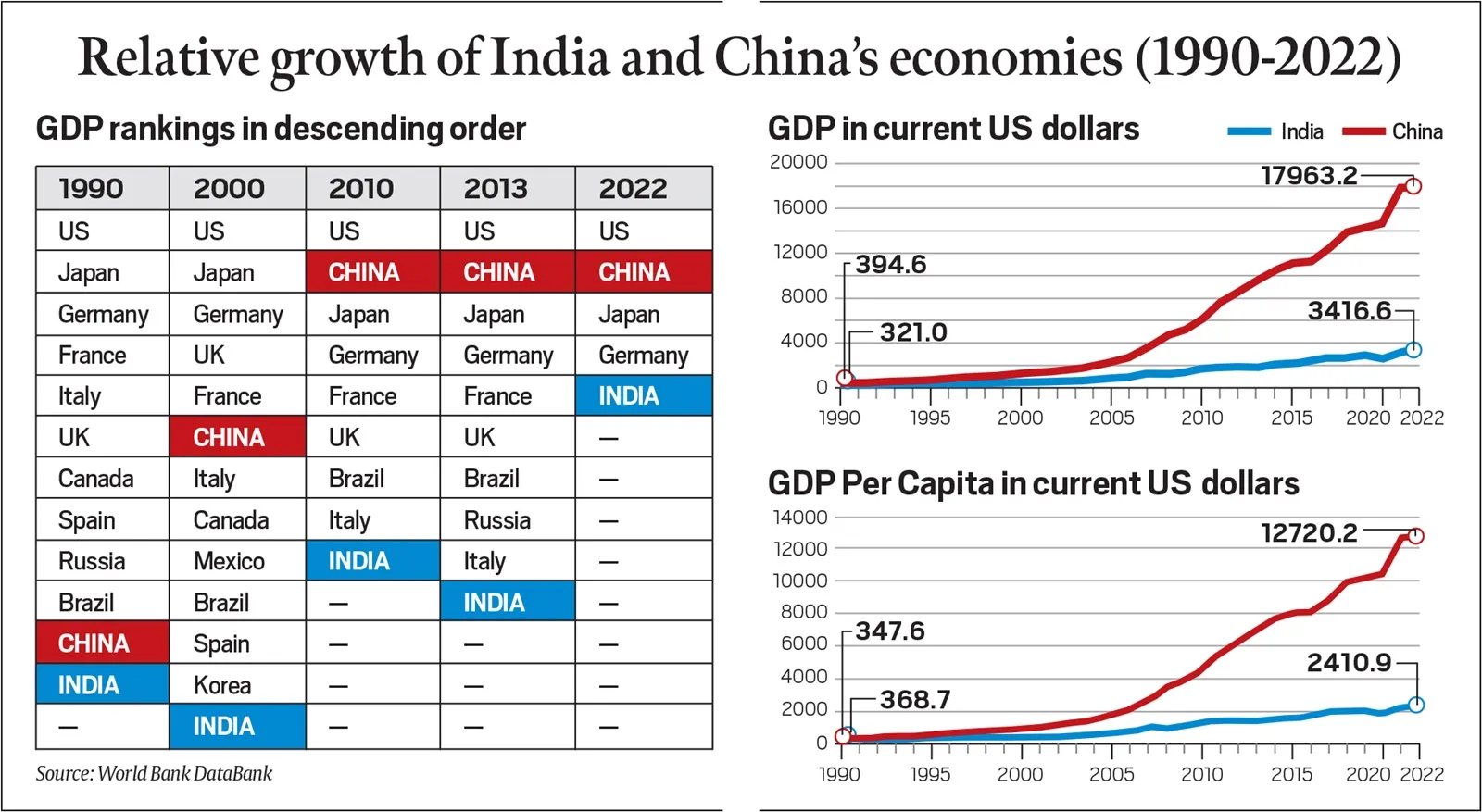Table of Contents
Nuclear Power and India’s Development
Context: A study by IIM Ahmedabad suggested prioritising nuclear energy and infrastructure expansion to help India achieve developed status by 2047 and net zero emissions by 2070.
Details And Findings of the Study
- Nuclear energy accounts for just 6% of India’s current energy mix.
- Achieving net zero by 2070 would require nuclear power to increase to 30 GW by 2030 and 265 GW by 2050, elevating its contribution from 4% to 30% of India’s total energy.
- In the net zero scenario, solar power’s share would decrease from 42% in 2030 to 30% in 2050.
- Currently, Solar and coal represent 16% and 49% of India’s installed generation capacity, respectively.
- Doubling investments and ensuring sufficient uranium supply, currently limited by international embargo, are critical for expanding nuclear energy.
- The study emphasises the need for a mix of technologies in India’s future energy portfolio, with no single solution to achieve net zero.
- Coal is expected to remain a significant energy source, with a necessary phase-down over the next three decades requiring alternative infrastructure development.
- India’s energy transition from 2020 to 2070 is estimated to need an investment of ₹150-200 lakh crore.
Strategic Petroleum Reserves
Context: India plans to build its first commercial crude oil storage at Padur, Karnataka, with 2.5 million tonnes capacity.
More In news
- This development is aimed at enhancing India’s stockpiles to act as insurance against any disruptions in supply.
- The expansion of oil storage capacity also aligned with India’s aspiration to become a member of the International Energy Agency (IEA), necessitating members to maintain a minimum of 90 days of oil consumption.
- Indian Strategic Petroleum Reserves Ltd. (ISPRL), an SPV created by the government for building and operating strategic petroleum reserves in the country.
| Fact: India is the world’s third-largest oil importer and consumer. |
GDP per Capita
Context:
- Achieving an annual GDP growth rate of 6%, India is projected to become the world’s third-largest economy by 2028.
- This underscores the importance of targeting a per capita GDP increase to $13,000-14,000, essential for realising a “developed India” by 2047.
China’s Dramatic Growth
- In 1990, China’s GDP was slightly larger than India’s.
- China’s real GDP grew at an average of 10% per year in the 1990s and 10.4% in the 2000s.
- By 2010, China became the world’s second-largest economy (after the US) with a GDP of $6.1 trillion (15.4 times higher than 1990).
- China’s per capita GDP surpassed $10,000 by 2019.
- China’s GDP is expected to surpass the US by the early to mid-2030s.

India’s Growth Compared to China
- India’s GDP growth has been slower than China’s.
- India’s real GDP grew at 5.8% in the 1990s and 6.3% in the 2000s.
- India’s GDP ranking improvement:
- 1990 and 2010: From 12th to 9th.
- 2013 and 2022: From 10th to 5th in GDP ranking.
- India’s GDP in 2022 ($3.4 trillion) is close to China’s GDP in 2007.
Focus on Per Capita GDP
- Aggregate GDP is important for global influence, but so is per capita GDP for a country’s living standard.
- China’s per capita GDP grew significantly from $348 (1990) to $12,720 (2022).
- India’s per capita GDP is $2,411 (2022).
India’s Future Growth Potential
- India needs to focus on per capita GDP growth for a higher standard of living.
- Even a 6% annual growth rate can significantly improve India’s economy in the long term.
- To become the world’s No. 3 economy by 2028, India needs a 6% growth rate, while other major economies maintain a 2% growth rate.
India’s Development Goals
- The Indian government aims to achieve “developed nation” status by 2047.
- Currently, India is a “lower-middle income” country, while China is an “upper-middle income” country.
- India aims to transition from a lower-middle-income to a high-income country, aligning with the World Bank’s per capita GNI threshold of $13,846 for high-income status.
We’re now on WhatsApp. Click to Join
Examples, Data and Case Studies For Value Addition
- Indian Economy (GS 3): The World Bank has revised India’s economic growth forecast for 2024 to 7.5%.
- This is a 1.2% increase from their earlier prediction.
- India’s robust economic activity and recoveries in other South Asian nations are fueling the positive outlook.
- Artificial intelligence (GS 3): The United States and the United Kingdom have established an agreement to collaborate on the development of safety testing protocols for advanced artificial intelligence (AI) models.
- The goal of the partnership is to create an effective and accessible pool of safety testing protocols that align with their respective AI systems’ deployment approaches.


 RailOne App: Indian Railways Launches Al...
RailOne App: Indian Railways Launches Al...
 Special Intensive Revision (SIR) of Elec...
Special Intensive Revision (SIR) of Elec...
 Daily Quiz 01 July 2025
Daily Quiz 01 July 2025





















